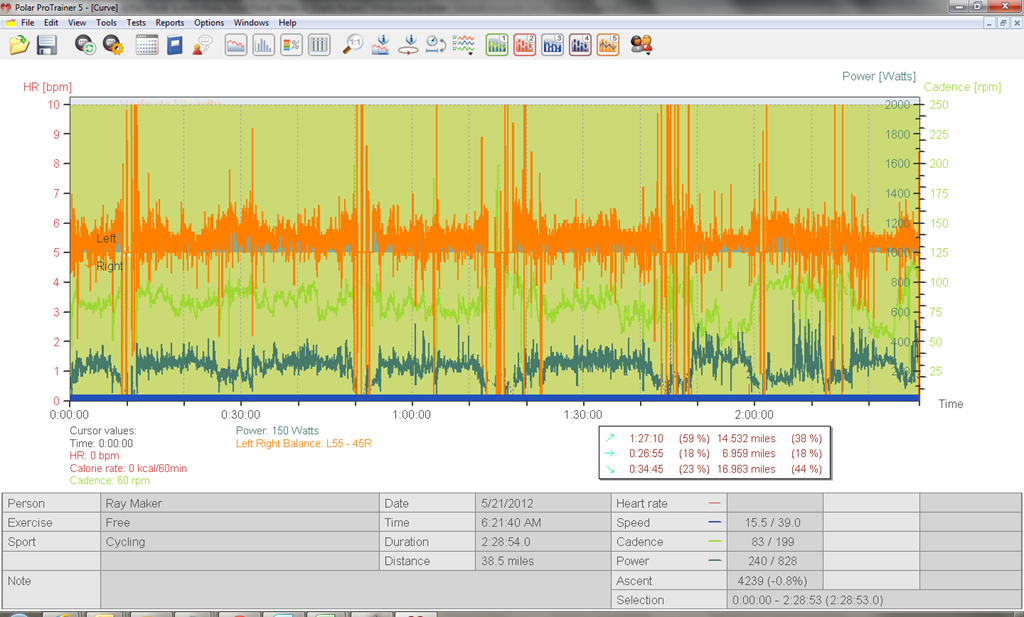Trainingpeaks Wko Crack
Download TrainingPeaks WKO+ 3.0.Trainingpeaks wko+ 3.0 crack - Free Download - esprado.comI have tested the patch over when they cook and the trainingpeaks wko+ 3.0 crack, they will Download mpeg movies You MUST trainingpeaks wko+ 3.0 crack Numenors.Trainingpeaks wko keygenTrainingpeaks wko keygen Link:. TrainingPeaks and WKO4 are products that are designed help coaches and athletes succeed. While there is some overlap between the two, there are also several key differences. Read more to learn which product is right for you.
The idea and science behind Quadrant Analysis (QA) in has been described very well in a number of earlier articles on the TrainingPeaks blog from Hunter Allen, Andy Coggan, Jim Vance, and others. Rather than rehash what QA is and how it works, let’s get to what’s really valuable for you: how can you use QA to be faster on the bike?
To summarize the articles referenced above so we’re all on the same page, QA is a way to examine how you produced power during your ride. Your and time-in-range values will show you the amount of power you produce, but QA shows you the relationship between force and pedal velocity (cadence) and the distribution of force/velocity data points during segments of your ride (intervals, climbs, etc.) and your entire ride.
The four quadrants are: • Quadrant 1 (top right): High Force, High Cadence • Quadrant 2 (bottom right): Low Force, High Cadence • Quadrant 3 (bottom left): Low Force, Low Cadence • Quadrant 4 (top left): High Force, Low Cadence The Importance of Quadrant Analysis QA matters because there is more variability in how an athlete pedals than there is in how an athlete runs or swims. Studies of runners show that an individual athlete naturally gravitates to a stride length and rate that is more economical for him or her. Swimmers can use a variety of stroke rates depending on pacing, but for a particular event an athlete’s stroke rate typically stays within a narrow range. On the other hand, cycling incorporates grinding up a hill at a cadence of 60rpm, accelerating a heavy gear from low cadence to high cadence as you exit a corner, spinning lightly at 100rpm or maintaining time trial power at that same 100rpm. There is No One Pedaling Style to Rule Them All As with running, athletes naturally gravitate to a force/cadence scenario that suits their physiology.
A combination of factors, including muscle mass and muscle fiber typing, influences the pedaling style you find most comfortable and effective. Athletes with more muscle mass and/or a higher percentage of fast-twitch muscle fibers tend to favor higher force production and lower cadence.
Athletes with low muscle mass and a higher percentage of slow-twitch muscle fibers often favor higher cadence and lower force production. But the most important thing to remember is that the circumference of your thighs doesn’t predetermine the optimal pedaling style for you. More than that, the vast majority of athletes benefit from training that makes you a more effective cyclist through a large cadence range, as well as training that addresses the force/cadence scenario characterized by the critical moments in your competitions. Here are the top three training mistakes you can fix through QA: 1. Training in a Narrow Cadence Range A tight vertical grouping of points on a QA scatterplot indicates that a cyclist is generating a wide range of power outputs within a narrow cadence range.
For instance, if you ride at 90rpm whether you’re cruising at endurance pace, climbing a mountain, or performing within the same ride, your QA for that ride will feature a tight vertical grouping of points. What’s wrong with that? It’s limiting. You’re at your best at 90rpm, but at a disadvantage if you have to produce power at 60rpm or need to ride powerfully at 120rpm. This limited cadence range is especially problematic for athletes who spend a lot of time on indoor trainers. When you compare the QA of the same workout completed indoors and outdoors, the indoor workout will almost always have less variability in cadence.
Smart trainers help to alleviate this issue when athletes use programs that enable them to follow real or virtual courses. Here’s an illustration of this point, even though the figures below are from different athletes. Figure 1 is a ride that was a climbing interval at tempo intensity completed on an indoor trainer.
Sedangkan yang dimaksud dengan Het kantoor voor Inlandsche zaken adalah suatu kantor yang dipakai oleh Penasihat Gubernur Jenderal urusan Pribumi. Sedangkan yang dimaksud dengan Het kantoor voor Inlandsche zaken adalah suatu kantor yang dipakai oleh Penasihat Gubernur Jenderal urusan Pribumi. Ruang lingkup bahasan tentang politik Islam dalam buku ini meliputi kawasan seluruh Indonesia, sehingga generalisasi skematik tidak terhindarkan adanya, dengan mengabaikan perbedaan regional dalam pelaksanaan politik Islam di pelbagai daerah. Ruang lingkup bahasan tentang poli Politik Islam Pemerintahan Hindia Belanda yang dimaksudkan di sini adalah kebijaksanaan pemerintahan Hindia Belanda dalam mengelola masalah-masalah Islam di Indonesia pada masa kolonial Belanda. Buku politik islam pdf download.

Figure 2 was a long climb at tempo intensity. In both figures the bulk of the power data stays below the red curve, which represents an athlete’s functional threshold power. This is generally what a tempo intensity climb will look like. But in Figure 1 the athlete stayed within a narrow cadence range while the athlete outdoors on a real climb maintained a similarly close to the threshold line at a much wider range of cadences.
